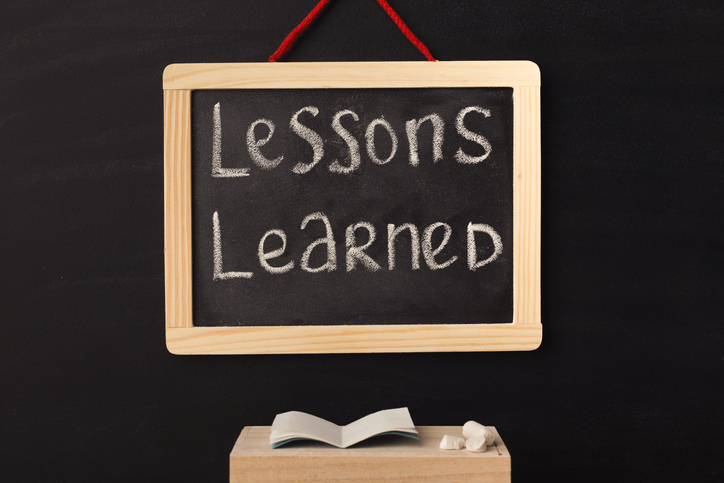
The hardest lessons, the most meaningful lessons, and the lessons that give me the best excuse to eat pizza (sometimes).
Having diabetes is like going through a break-up: you may have to say goodbye to some things, but you’ll only move on to better.
This is a silly example, but hear me out. Before I was diagnosed, I LOVED milk. A world in which every “Got Milk?” ad sported my face was imaginable. But when diabetes moved in, my dairy affair was over, as it spiked me too high to drink with breakfast. The strangest things can sadden you with T1, and cutting out milk was one of them. But just like a bad break-up, after taking some time to mourn, I moved on to a new breakfast beau: almond milk. And guess what? I LOVE almond milk. More than I ever loved its cow-made counterpart. And I never would have found it without diabetes. Diabetes changes a lot in a person’s life, and it can be jarring to adjust your routine. But if you’re willing to try new things, chances are you’ll find something even better.
Diabetes is a speed bump, not a stop sign.
There is a lot of language surrounding diabetes that implies hard, and incorrect, boundaries. We CAN’T eat sugar. We’ll NEVER be able to do something. This language is wrong. When I was first diagnosed, I barely knew what diabetes was, and I was terrified my dreams had been cut short. Six years later, T1D has never stopped me from doing anything I wanted to: it actually strengthened my resolve to do so. I love going on big hikes – I hiked Half Dome in Yosemite a few summers ago, and I’ll be hiking the Grand Canyon later this year. Look at Supreme Court Justice Sonia Sotomayor, or celeb Nick Jonas, or Olympic skier Kris Freeman – they all have type 1 and all have remarkable accomplishments. Diabetes can make goals more complicated, but all it does is make us better planners and more mindful adventurers.
Live in each moment – good and bad.
I had a rough low recently. I was riding in a car headed to have a drink with friends, and I felt totally awful as my blood sugar plummeted. I cried, frustrated, and that was therapeutic. When my levels rose, I went inside and had fun with the pals, and that felt good too. It was jarring to go from feeling so low (pun intended) to having a normal time with friends. But if you berate yourself every time your blood sugar is out of line, you’re going to have very little time leftover to be happy. When you live with T1D, things change too quickly to dwell. It’s important to acknowledge when you’re feeling bad, but it’s also important to choose to learn and move on.
Listen to your body.
Type 1 is a lot of math, but it’s also a lot of intuition: to live successfully with it means combining the two. Math-wise, pizza is tough to eat. The fat, the protein, the carbs…it’s not uncommon for a slice to spike me for hours after eating. And yet, one day, a gut feeling told me my body wanted pizza, and that it would be okay. Three hours later, my blood sugar had still not gone above 100. I cannot tell you what magic happened that day, but it was an important reminder that, no matter if we’re dosing, eating, or exercising, our CGMs and our insulin are tools that work in conjunction with another important tool: knowing and listening to our bodies. Sometimes that means we can eat that slice of pizza, and sometimes that means we need to skip eating the office birthday cake. What’s important is that we’re honest with ourselves and strategic with our choices.
Wearing diabetes with pride can help make it less isolating.
When I transitioned to wearing my CGM on my arm, it had an amazing unintended consequence: I started meeting other T1s in my day-to-day life. I visited a small mountain town last fall, wearing my CGM on my arm for the first time, and went into a candle shop. While looking through their shelves, the woman working the counter asked, “Oh, is that the G6? Are you type 1?” Upon my yes, she called her husband over from where he was making candles, who was also type 1, and we had a wonderful conversation. Similarly, I used to be nervous about sitting at the main conference table during meetings at work, worried that everyone would stare if I did an injection. But when I started openly injecting, and folks started asking, I was able to educate more people about what it means to live with this disease, and my coworkers began to understand me more. Type 1 can be isolating, and it can make us self-conscious, but being proud and open about it can lead to incredible interactions and a better life with it.
Be your own priority.
T1D impacts all parts of your life. From workout instructors yelling at us to push harder (when really our blood sugar is dropping), to people thinking you’re rude for looking at your phone during a meeting (when you’re really just keeping an eye on your levels), you have to be the number one person looking out for yourself in a world that largely doesn’t understand T1D. Your top priority should be making sure your physical, mental, and emotional health are in good places. Exercising can be difficult with T1, but you gotta do it. Hear someone make an ill-informed diabetes joke, and it makes you uncomfortable? Speak up for yourself and for your community. And, when you can, take time for yourself. I take my diaversary off from work every year, and I use that day to reflect and recenter. I am taking that day off as I write this. 6 years with Type 1 has been a journey, long and hard. But, even though I’d definitely rather have a working pancreas, I deeply value the strength, determination, and discipline I have gained from these six years, and it’s hard to say I’d trade that for anything.



I so appreciate your post! Most inspiring andnplan on sharing with my T1 friends and family members!
Thanks so much! I
Sarah, thanks for sharing!
I told my sister, Mary Koch about TCOYD.
I am an RN and I am not diabetic but I have such a heavy history of Type 1 in my family that I wanted to go to a conference and did a number of years ago In San Diego. I was so impressed—a conference put on by diabetics for diabetics.
I met Dr Edelman on another occasion and bought several copies of his “Taking Control of Your Diabetes” book to give to friends. What a magical book, I thought.
Sarah’s essay was just perfect for my sister who, as a diabetic for a couple years, has expressed many of the same sentiments as Sarah and how reassuring for my sister that she and Sarah are on the same page.
For famous people with diabetes, I would like to add Bobby Clarke, born in 1949, became Type 1 at age 13, played in the NHL for 15 years and, as the Captain of the Philadelphia Flyers, won the Stanley Cup. He is now an executive with the Phila Flyers, residing in Ocean City, NJ.
Thank you for your kind words, Peggy, and for your support of everyone in your life affected by diabetes! 🙂